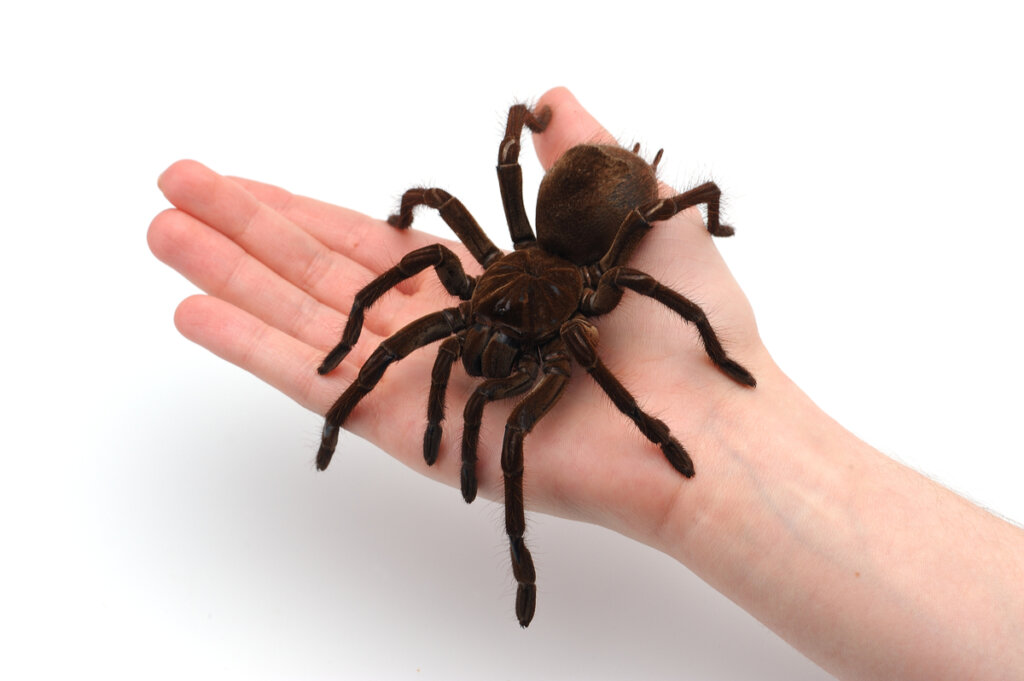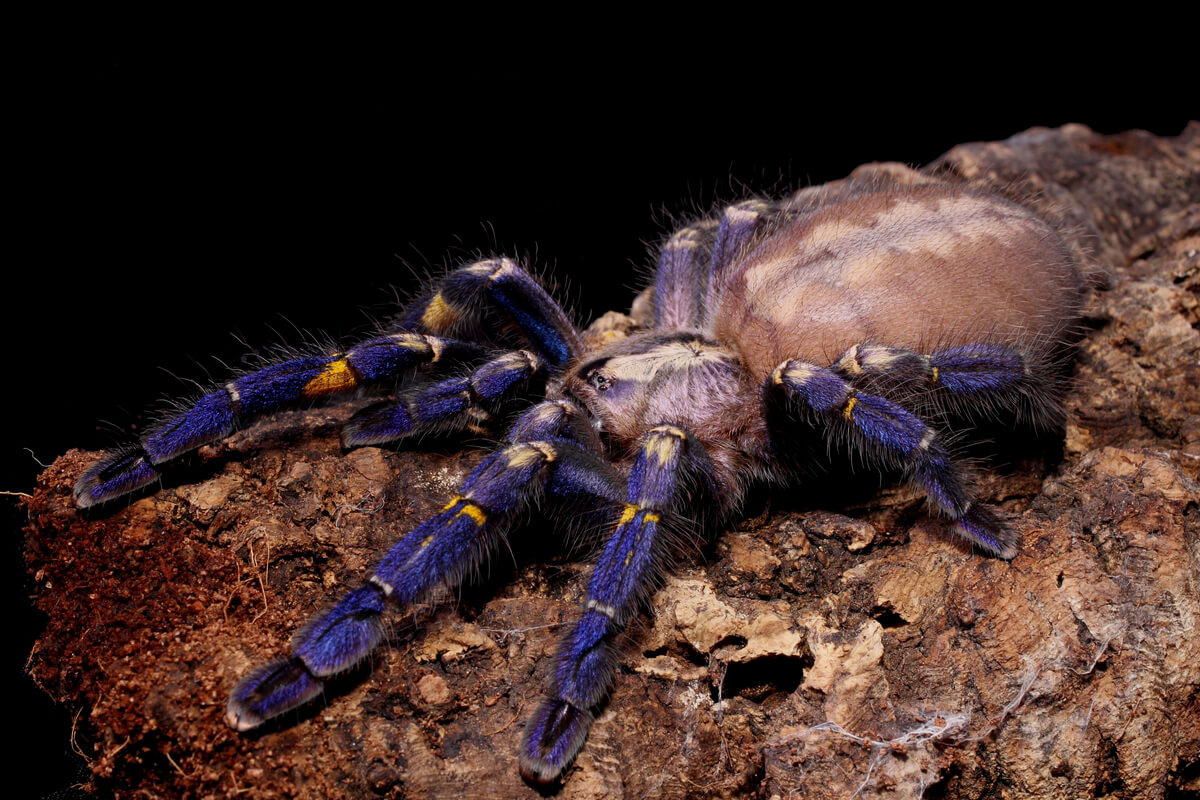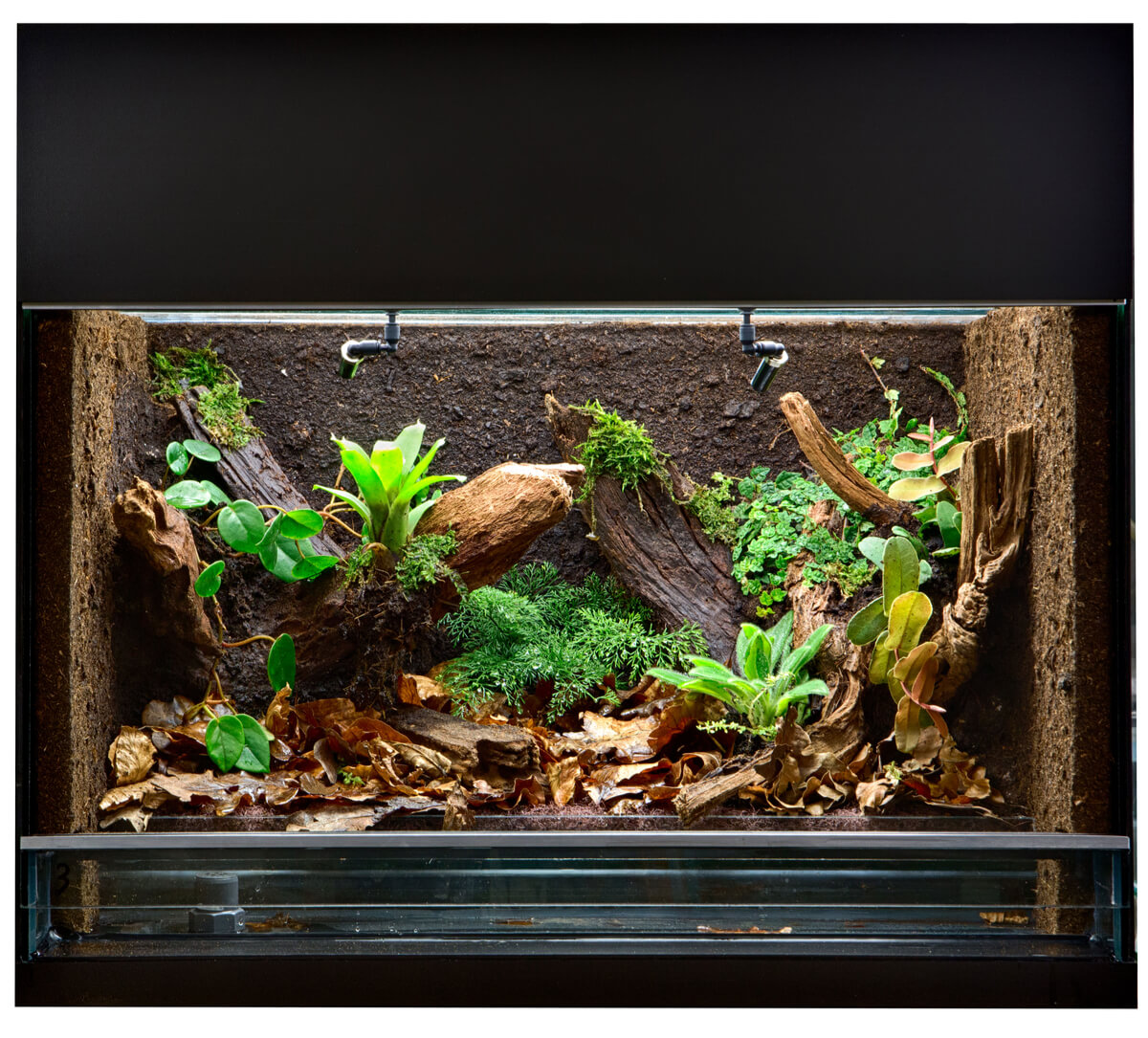Terrariums for Arachnids: Everything You Need to Know

Terrariums for arachnids? Yes, you read that right. These days, spiders have become pets for many people. For this reason, the need to design areas where they can live as in their natural habitat has come to the fore.
Keeping spiders as pets is something new and has become popular, due to their appearance and behavior. It can be said that this is a paradoxical trend, taking into account that studies have indicated that the rejection of spiders is something evolutionary. As you might expect, humans have an aversion to what is potentially harmful.
However, there seems to be an interest in getting over this fearful relationship and many people are encouraging themselves to have spiders as pets. However, it’s necessary to have a special place for them, in addition to knowing the risks they represent. We’ll talk about it in the following lines.
Advantages of having an arachnid as a pet
Before you bring a spider home and build its terrarium, you should know that, like any other pet, it needs your time and care. However, its size and behavior give it advantages over other animals. Among them, we can highlight the following:
- In most cases, arachnids adapt quite well to small spaces. In fact, this is the case in nature, as they tend to make a den and not stray from it unless strictly necessary.
- Spiders are usually very solitary animals, and it isn’t necessary for them to have company in their terrariums. In fact, they aren’t very sociable animals and will attack any member of their species.
- Terrarium maintenance is easy and inexpensive. Being such a small place it doesn’t require much from you after installation. Also, arachnids are very clean animals that will do much of the work.
- Being predatory, spiders must feed on small live animals, such as insects and lizards. However, they don’t need to eat every day. Adults, for example, can eat once a week.
- In addition to being clean, spiders are quiet and very calm, although it all depends on the species.

Disadvantages of having an arachnid in a terrarium
With spiders there are very positive points, but there are also disadvantages. Among them, we highlight the following:
- Most spiders are poisonous. Their bites can cause from allergic reactions to cramps or severe pain. All arachnids attack when threatened, but not unjustifiably.
- The more exotic spiders require more care and more complex terrariums. Depending on where they come from, they may need humidifiers and electronics to control the room temperature.
- Their life expectancy is relative. While most arachnids live for only a few years, tarantulas live between 20 and 30 years. The ones that last the longest are the females.
- Due to their ability to escape in seconds, the spider terrarium should always be closed.
Terrariums for arachnids: everything you need to know
Well, now that you understand the advantages and disadvantages of having a spider as a pet, it’s time to tell you everything you need to know about arachnid terrariums.
A good size
While it’s true that spiders do well in small spaces, the terrarium should be at least twice the size of the spider. Only in this way will it be possible to meet the needs of the pet – who needs to move – and to give it space to build her nets to hunt for food.
In the specific case of tarantulas, they will need at least 30 centimeters in length in their terrarium.
Tropical climate
The terrarium needs to meet specific conditions for it to be inhabited. It’s necessary to regulate the temperature, humidity, and lighting to simulate, as closely as possible, a tropical climate. This is best for most exotic arachnids, but others need rather semi-desert conditions.
Humidity control
Calculating the humidity of the terrarium is necessary and important for the pet spider. You can supply the substrate with the water necessary to maintain this environment by using a sprayer once or twice a week. Of course, be careful that it doesn’t fall on the animal or other elements.
Remember that some arachnids are endemic to desert places. Find out everything about the species that you’re going to acquire, as an excess of humidity can end its life.
To guide you more accurately, you could get a hygrometer; however, cheap ones aren’t 100% reliable.
With sun and shade
You need the terrarium to have a cold and a warm part, something that isn’t always so easy to achieve. For the hot part, you can use a thermal blanket under the terrarium or at the back, without letting it exceed 40% of the total surface. In this way, you can have different temperatures in the same environment.
Nice, but functional
The beauty of the terrarium will please caregivers more than spiders. Still, feel free to decorate your pet’s home however you see fit. Of course, remember that this must be functional for the spider that’s going to live there.
It’s important for your 8-legged friend to move freely without feeling overwhelmed, and also to have space to rest in solitude. As for water, put in a bowl that you can easily change every day. Make sure that fresh air enters the installation through upper metal slits, but remember to keep the terrarium very well closed.
Items to consider include the following:
- Stones
- Cactus, but without thorns
- Plants
- Coconut fiber
- Sticks and branches

Terrariums for arachnids – build your own!
Now you know the most important aspects of terrariums for arachnids. If you have considered the advantages and disadvantages of having a spider as a pet and you have decided to get one, then you can build your own terrarium, always attending to the needs of the animal.
Keep in mind that we have shown you the general care of the most common exotic arachnids, but not all have the same requirements. Always find out about the needs of the animal before purchasing it.
All cited sources were thoroughly reviewed by our team to ensure their quality, reliability, currency, and validity. The bibliography of this article was considered reliable and of academic or scientific accuracy.
- Mayol, Ll. Lesiones producidas por insectos, arácnidos y anfibios.
- Hoehl Stefanie, Hellmer Kahl, Johansson Maria, Gredebäck Gustaf. Itsy Bitsy Spider…: Infants React with Increased Arousal to Spiders and Snakes. Frontiers in Psychology. Vol. 8. 2017.
